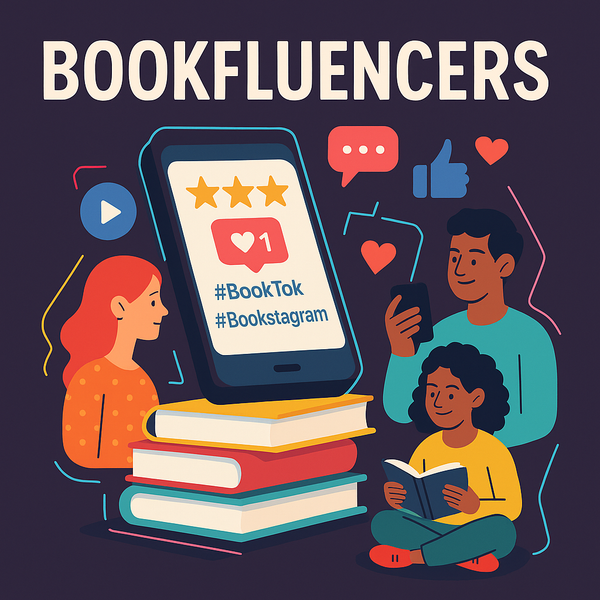When’s the Right Time to Publish? Smart Release Strategies for Indie Authors in 2025

You’ve typed “The End” Your manuscript is polished, your editor is happy, your cover is ready, and you’re itching to hit publish. But here’s the big question: when is the right time to release your book?
For many indie authors, release timing feels like a minor detail — after all, isn’t the hard part writing the book? But ask around in self-publishing communities, and you’ll hear the same frustration repeated again and again: “I launched my book and nothing happened”.
The truth is, timing can make or break a launch. Every year, millions of new titles hit the market. In 2023 alone, more than 2.6 million books were self-published worldwide — and that number is rising fast. With AI tools lowering barriers and more writers publishing than ever, standing out requires more than just excellent writing and solid marketing. It also means understanding when to put your book into the world.
Traditional publishers know this well. They plan seasonal releases, align genres with cultural moments, and build pre-launch buzz months in advance. Indie authors, on the other hand, often hit “publish” as soon as the file is ready, hoping momentum will follow. Sometimes it works — but more often, books slip into obscurity not because they weren’t good, but because they weren’t launched strategically.
The good news? You don’t need a corporate publishing calendar to make timing work for you. With a bit of planning, smart use of metadata, and a long-term mindset, indie authors can position their books for maximum visibility.
In this article, we’ll look at why release timing matters, the common mistakes to avoid and practical strategies you can use to give your book the strongest possible start in 2025.
Why Release Timing Matters
In self-publishing, it’s tempting to think that once your book is ready, hitting “publish” is all that’s left. But timing plays a much bigger role than most authors realise.
Readers don’t discover books in a vacuum. They’re influenced by seasons, cultural moments, and market trends. Big publishers know this — and they use it. Did you know romance titles spike around Valentine’s Day, cosy mysteries flood the fall, and self-help books dominate in January? Big publishers plan launches to match reader moods and maximise visibility.
Indie authors face the same reality, just without the marketing machine of a traditional house. Suppose you release your book in a crowded month, like September (when publishers drop their heavy hitters for the holiday season), your work risks being buried under a huge pile of books. On the flip side, publishing at a quieter time can give your book more breathing room.
Timing also matters for algorithms. Platforms like Amazon, Goodreads, TikTok (BookTalk) recommend books based on engagement and early momentum. A well-timed release — combined with pre-orders, ARC reviews, and consistent buzz — can push your book higher in search results and category charts, making it more discoverable to new readers.
In other words, a smart launch doesn’t guarantee success, but poor timing almost guarantees extra frustration. By thinking about release windows, pre-launch buildup, and seasonal trends, indie authors can turn timing into one of their strongest tools for discoverability.
The Seasonal Book Market at a Glance
Timing a release isn’t just about avoiding crowded weeks — it’s also about understanding the rhythms of the book market. Readers seek different kinds of stories at various times of the year, and traditional publishers tailor their calendars to these seasonal cycles. Indie authors can do the same.
Here’s a quick snapshot of how the publishing year typically flows:
- January – February: Fresh starts and love stories.
Nonfiction dominates here — self-help, business, and health titles thrive as readers set new goals — romance, of course, peaks around Valentine’s Day. - Spring (March – May): New beginnings and escapism.
Lighter fiction, YA, and feel-good stories do well. It’s also a popular window for debut authors, since readers are hungry for something new as the year unfolds. - Summer (June – August): Vacation reads and blockbusters.
Fast-paced thrillers, fantasy epics, and beach reads are in demand. Many readers are travelling or taking time off, so page-turners and binge-worthy series stand out. - Fall (September – November): Prime time — and the most competitive season.
Big publishers stack their calendars here, preparing for the holiday rush. Literary fiction, award contenders, and major releases dominate. It’s harder for indies to get noticed, but genre fiction with strong marketing can still thrive. - December: Holiday gifting and cosy reads.
Cookbooks, children’s books, and gift-worthy hardcovers sell strongly. Shorter, heartwarming fiction also performs well during the holiday season.
The point isn’t that you must release your book in a specific month, but that timing it with reader expectations gives you an edge. Publishing a romance in February or a thriller in July means you’re working with the market’s current, not against it.
Smart Release Strategies
Knowing the seasonal flow of publishing is one thing — but how do you actually use that knowledge to launch your book more effectively? Here are some practical strategies authors can apply right now:
1. Align your genre with the season
If you’ve written a romance, a February release can give you a natural marketing hook. If you’ve got a fast-paced thriller, summer might give you the edge. Aligning your release with reader expectations helps your book feel timely and relevant.
2. Use pre-orders to build anticipation
Don’t let your book drop into the market silently. Setting up pre-orders enables you to start building momentum early, collect early reviews, and provide algorithms with valuable data before the release day.
3. Build a beta reader team
Get advance copies into readers’ hands. Their early reviews become social proof that helps convince new readers to take a chance on your book from day one.
4. Spread your marketing across weeks, not days
Too many indie authors treat launch day like the finish line. In reality, it’s the starting point. Plan a staggered promotion strategy: send newsletters one week, conduct podcast interviews another, and spread social media pushes across a month. Consistency outperforms intensity.
5. Pay attention to global calendars
Publishing is global. What’s peak season in the U.S. might not align with holidays in the U.K. or Europe. If you’re targeting international readers, also consider their seasonal buying cycles.
6. Leverage metadata as silent marketing
Categories, keywords, BISAC codes, and cover design aren’t glamorous, but they’re powerful. Optimised metadata ensures your book lands in the right virtual shelves, boosting its discoverability long after launch day.
A well-timed release combined with these strategies won’t guarantee a bestseller — but it will give your book the strongest possible start in a crowded market.
The Role of Metadata and Categories
Timing captures readers’ attention, but metadata determines where your book actually appears. In a digital-first market, metadata is silent marketing — it works in the background to make your book discoverable long after the initial buzz fades.
That means getting the technical details right:
- Categories and Keywords → Choosing the right BISAC codes and marketplace categories helps your book appear in relevant charts instead of being buried in “general fiction”.
- ONIX Feeds and ISBN Databases → These ensure that your book’s details are registered correctly, allowing libraries, bookstores, and distributors to find and order it.
- Blurbs, Descriptions, and Cover Data → The words and visuals tied to your book’s listing are what algorithms (and readers) use to decide if it’s worth clicking.
Too often, indie authors treat metadata as an afterthought — but it’s the foundation of discoverability. A book released at the perfect moment can still flop if it’s mislabeled, missing categories, or invisible to retailers’ systems.
This is where tools make a difference. With the right support, indie authors don’t need to worry about whether their BISAC codes are correct or if their ONIX data is feeding into ISBN databases. When metadata is automated and optimised, authors can focus on the creative side while their books are fully integrated into the global book supply chain.
PubliWrite’s Perspective
At PubliWrite, we understand how overwhelming release planning can feel for indie authors. Timing, metadata, promotion — it’s a lot to juggle on top of writing. That’s why we’ve built tools that take care of the heavy lifting, so authors can focus on creativity while still giving their books the strongest chance at success.
Here’s how we help:
- Creator Studio with beta reader access → Invite trusted readers into your process early. Gather feedback, build buzz, and create a launch team before release day.
- Cover Creator → Design a professional-quality cover in minutes
- Labelling system for discoverability → Smart tags and categories make your book easier to find in our marketplace.
- Social media amplification → Every new book published with PubliWrite is featured on our channels, instantly boosting visibility beyond your own network.
- Author promotion program → Structured promotional opportunities that help your book get noticed in a crowded market.
Our goal isn’t to replace marketing — because no platform can. But by making the technical and promotional pieces easier, we help authors focus on the part they love most: writing. With PubliWrite, release timing stops feeling like guesswork and starts becoming part of a clear, supportive process.
Final Thoughts — Timing Is Part of the Story
Finishing a book is an achievement worth celebrating — but publishing it is only half the journey. The other half is making sure your story reaches the readers who will love it. And that’s where timing comes in.
A smart release strategy won’t turn every book into a bestseller, but it can make the difference between being discovered and being overlooked. From aligning with seasonal cycles to setting up pre-orders, building ARC buzz, and optimising metadata, timing significantly influences how your book enters the world — and how far it travels once it’s there.
The truth is simple: books don’t sell themselves. But with the right planning, tools, and persistence, indie authors can launch with confidence instead of guesswork.
👉 What about you? If you’ve published before, how did you decide on your release timing — and would you do it differently next time? Share your thoughts in the comments.
Before you go:️️
- Follow us: X | LinkedIn | Instagram | Meta
- Visit our website on https://publiwrite.com





